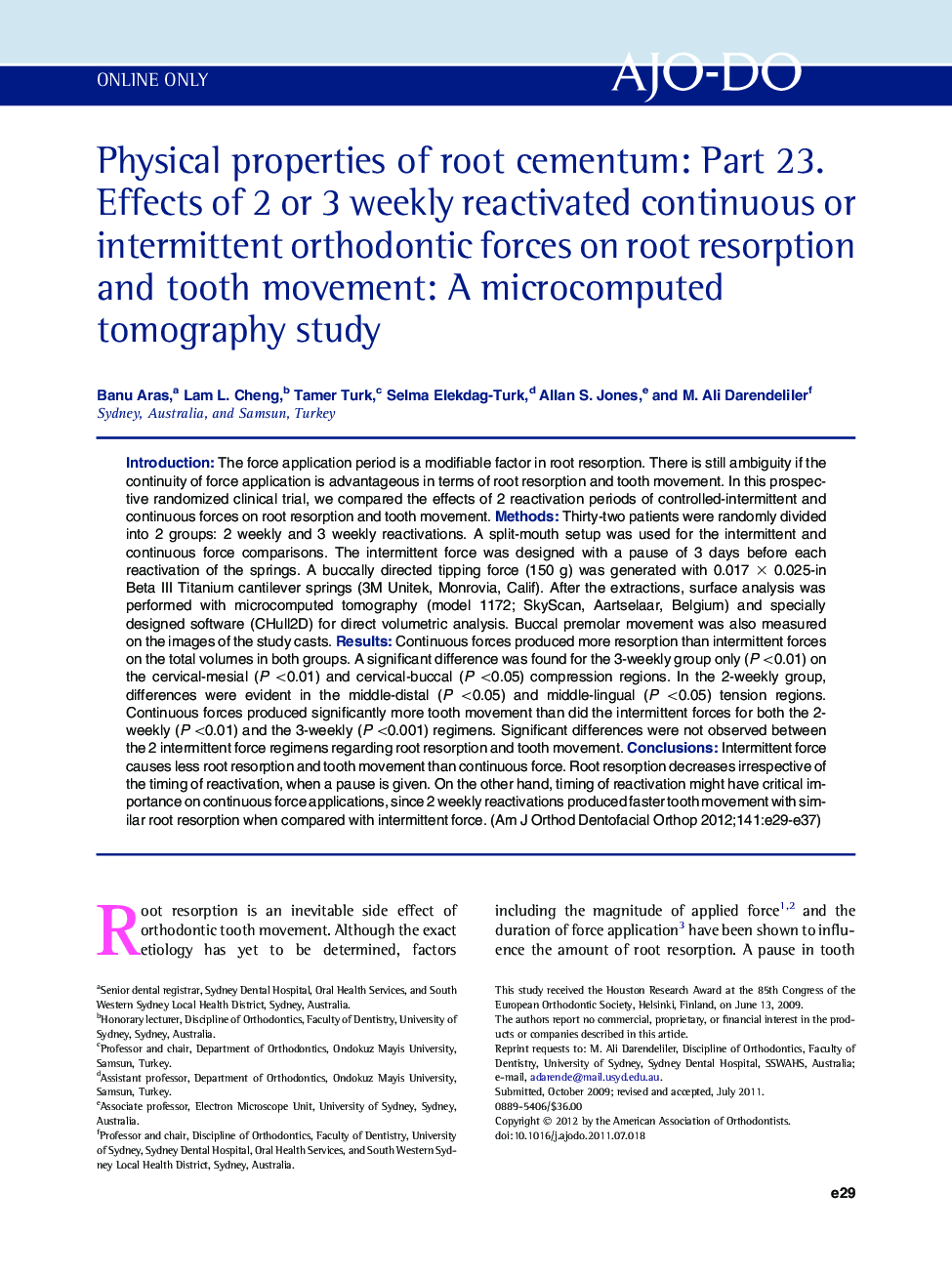| کد مقاله | کد نشریه | سال انتشار | مقاله انگلیسی | نسخه تمام متن |
|---|---|---|---|---|
| 3117072 | 1582732 | 2012 | 9 صفحه PDF | دانلود رایگان |

IntroductionThe force application period is a modifiable factor in root resorption. There is still ambiguity if the continuity of force application is advantageous in terms of root resorption and tooth movement. In this prospective randomized clinical trial, we compared the effects of 2 reactivation periods of controlled-intermittent and continuous forces on root resorption and tooth movement.MethodsThirty-two patients were randomly divided into 2 groups: 2 weekly and 3 weekly reactivations. A split-mouth setup was used for the intermittent and continuous force comparisons. The intermittent force was designed with a pause of 3 days before each reactivation of the springs. A buccally directed tipping force (150 g) was generated with 0.017 × 0.025-in Beta III Titanium cantilever springs (3M Unitek, Monrovia, Calif). After the extractions, surface analysis was performed with microcomputed tomography (model 1172; SkyScan, Aartselaar, Belgium) and specially designed software (CHull2D) for direct volumetric analysis. Buccal premolar movement was also measured on the images of the study casts.ResultsContinuous forces produced more resorption than intermittent forces on the total volumes in both groups. A significant difference was found for the 3-weekly group only (P <0.01) on the cervical-mesial (P <0.01) and cervical-buccal (P <0.05) compression regions. In the 2-weekly group, differences were evident in the middle-distal (P <0.05) and middle-lingual (P <0.05) tension regions. Continuous forces produced significantly more tooth movement than did the intermittent forces for both the 2-weekly (P <0.01) and the 3-weekly (P <0.001) regimens. Significant differences were not observed between the 2 intermittent force regimens regarding root resorption and tooth movement.ConclusionsIntermittent force causes less root resorption and tooth movement than continuous force. Root resorption decreases irrespective of the timing of reactivation, when a pause is given. On the other hand, timing of reactivation might have critical importance on continuous force applications, since 2 weekly reactivations produced faster tooth movement with similar root resorption when compared with intermittent force.
Journal: American Journal of Orthodontics and Dentofacial Orthopedics - Volume 141, Issue 2, February 2012, Pages e29–e37